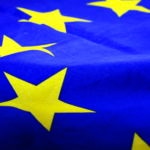How will Europe look like in 2025?
Recently, the European Commission (EC) presented a White Paper on the Future of Europe. This document comes at a crucial time for the European Union and represents the Commission’s contributions to the Rome Summit On March 25, 2017, the EC explains.

The future of the European Union has been a frequently topic of conversation over the past year, especially after the U.K. voted to leave the EU (Brexit). The European Commission presented five scenarios on how Europe could evolve from now until 2025. To commemorate the 60th anniversary of the Rome Treaty, the EC is reflecting on the present and future of the EU. In the words of the Commission President, Jean-Claude Juncker, “It is time for a united Europe of 27 to shape a vision for its future. It's time for leadership, unity and common resolve.” Here are the five possible scenarios set out in the White Paper:
- Scenario 1: Carrying on – The EU consisting of 27 Member States (EU27) focuses on delivering the 2014 and 2016 reform programs. In 2025, this would mean that most Europeans would be able to cross borders without having to stop for checks.
- Scenario 2: Nothing but the Single market – If the Member States are unable to reach agreements on a range of policy areas, the EU27 may decide to focus on the Single Market. In 2025, this would mean that crossing borders for business or tourism would be more difficult due to regular checks. Finding a job abroad would also be more complicated. And the transfer of pension rights or medical rights to another Member State would not be guaranteed.
- Scenario 3: Those who want more do more – The EU27 continues in its current state, but allows willing Member States to increase collaboration in specific areas like defense, internal security or social matters. “Coalitions of the willing” would emerge.
- Scenario 4: Doing less more efficiently – The EU27 focuses on increasing and accelerating its accomplishments for selected priorities, while doing less where the EU is not considered to have an added value. This would mean focusing its attention and limited resources on a reduced number of policy areas.
- Scenario 5: Doing much more together – Member States decide to share more power, resources and decision-making in all areas. Decisions would be made more quickly at the European level and rapidly enforced.
According to BBVA Research, it "helps to start a debate on what the EU27 should do or not do" but "without clearly signalling one preferred option". In a report published recently, BBVA Research adds that "it refrains from entering the debate of what to do with the euro area, and therefore does not enter the debate on banking and fiscal union".